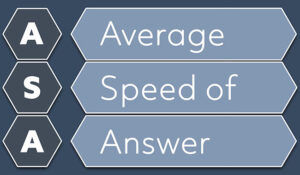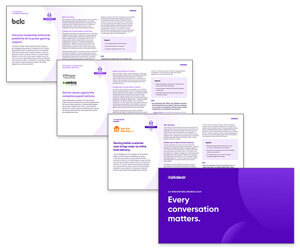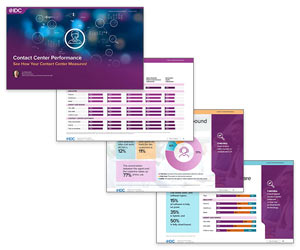The Average Speed of Answer (ASA) is a key metric used to measure how quickly customer calls are answered when they come into a service centre.
ASA plays a critical role in customer satisfaction, as shorter wait times often lead to better experiences. In this article, we’ll explore how ASA is calculated, its importance, and tips on how to improve it for your contact centre.
What Is Average Speed of Answer?
Average Speed of Answer is a key contact centre metric that measures the average time it takes for an agent to answer an inbound call after it enters the queue. This includes the time a caller spends waiting on hold but excludes time spent navigating an IVR (Interactive Voice Response) system.
A low ASA indicates that customer calls are being answered quickly, which is crucial for delivering a positive customer experience. A high ASA can signal issues such as staffing shortages, inefficient processes, or technical problems that may frustrate customers.
Why Is Average Speed of Answer Important?
Average Speed of Answer is important because it directly impacts both customer experience and contact centre performance.
When customers are left waiting too long, frustration can build, potentially leading to complaints, negative reviews, or even lost business. A low ASA helps create a positive first impression, showing customers that their time is valued.
ASA also plays a key role in measuring operational efficiency. A consistently high ASA may point to issues such as understaffing, inefficient call routing, or poorly designed processes. By tracking ASA, contact centres can identify these problems early and take steps to improve.
Additionally, ASA can influence other key metrics like First Contact Resolution (FCR) and Customer Satisfaction (CSAT). Faster response times often lead to smoother conversations and quicker issue resolution, which enhances the overall customer experience.
While speed is important, it’s crucial to balance ASA with service quality to ensure agents aren’t rushing calls just to meet targets. The goal is to answer calls quickly while still providing helpful and effective support.
How to Calculate Average Speed of Answer
To calculate the average speed of answer, you need to:
1. Collect Data
First, gather the total wait time for all the calls that were answered within a specific period. This means measuring how long customers waited on hold before speaking with an agent. Note that this should only include calls that were actually answered, not abandoned or missed calls.
2. Add Up the Total Wait Time
Sum the total amount of time customers spent waiting for their calls to be answered. For example, if three calls were answered and the wait times were 20, 30, and 40 seconds, the total wait time would be 90 seconds.
3. Count the Total Number of Answered Calls
Count how many calls were answered during that same period. Using the example above, if there were three calls answered, the total number of answered calls is 3.
4. Calculate ASA
Divide the total wait time by the number of answered calls to get the Average Speed of Answer.
The formula for ASA:
- ASA = Total Wait Time ÷ Number of Answered Calls
Example:
- ASA = 90 seconds ÷ 3 calls = 30 seconds
So, in this case, the Average Speed of Answer (ASA) would be 30 seconds. This means that, on average, it took 30 seconds for an agent to answer a call.
Important Notes
ASA typically excludes time spent in IVR systems or after the call is transferred to another agent.
It’s useful to calculate ASA for different periods (e.g. daily, weekly, monthly) to monitor trends and make necessary adjustments.
5 Ways to Improve Average Speed of Answer
Improving the Average Speed of Answer (ASA) requires a combination of strategies focused on increasing efficiency and optimizing resources. Here are 5 approaches to help you reduce wait times and improve ASA:
1. Optimize Staffing Levels
Ensure you have enough agents available to handle peak call volumes. Use historical data to forecast busy times and adjust staffing levels accordingly.
Implementing workforce management tools can help you predict demand and schedule agents more effectively, ensuring adequate coverage during high-traffic periods.
2. Improve Call Routing
Use advanced call routing technology to direct customers to the most appropriate agent quickly. Implementing intelligent Interactive Voice Response (IVR) systems or skills-based routing can help reduce wait times by sending calls directly to agents with the right expertise, preventing unnecessary transfers or hold times.
3. Enhance Training and Agent Knowledge
Well-trained agents are more likely to resolve calls quickly and accurately, reducing the need for follow-ups and minimizing hold times.
Ensure that agents are familiar with your products, services, and internal systems to handle a wide range of enquiries efficiently. Regular training sessions and updates on new systems or services can keep agents prepared for any situation.
4. Streamline Internal Processes
Simplify internal workflows and make sure agents have access to the right tools and resources to handle calls swiftly.
Ensure that your CRM, knowledge base, and any other essential systems are integrated and easily accessible to agents. Reducing the time agents spend searching for information helps them handle calls faster.
5. Offer Multichannel Support
Encourage customers to use other channels like chat, email, or self-service options for simple enquiries. By deflecting some of the volume from the phone lines, you can reduce the pressure on agents, allowing them to focus on more complex calls and answer them more efficiently.
This article is a revised version of Your Guide to the Average Speed of Answer in a Call Centre, originally published by Talkdesk.
For more insights on average speed of answer, read these articles next:
- What is Average Speed of Answer?
- What Is an Acceptable Call Centre Waiting Time?
- How Do I… Reduce Call Queuing Time?
Author: Hannah Swankie
Reviewed by: Megan Jones
Published On: 11th Apr 2025
Read more about - Expert Insights, Average Speed of Answer (ASA), Talkdesk



















